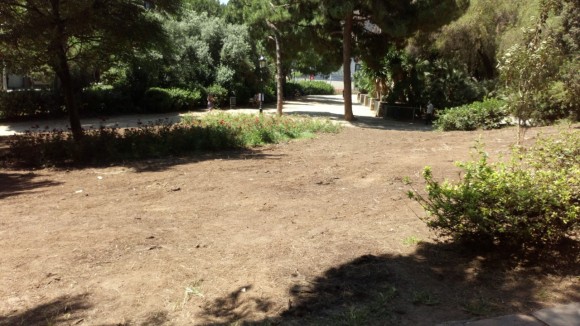The months of lockdown, when less maintenance work was carried out in parks, coupled with one of the wettest springs in recent years, has seen city butterfly populations flourish in Barcelona. Thanks to Barcelona Citizen Observatory for Urban Butterflies lead by CREAF, some 28% more butterfly species were recorded in the city between May and June this year, with 74% more individuals than for the same period last year.
In all, 4,978 butterflies from 39 different species were observed during the season from March to October. The Speckled Wood (Pararge aegeria), the Cabbage White (Pieris rapae) and the Wall Brown (Lasiommata megera) are the most common species in the city. At the same time, new species such as the Grayling (Hipparchia Semele) have also appeared. The parks with the largest butterfly populations are the Parc del Guinardó, the Parc del Castell de l’Oreneta and the Parc del Putxet, given their proximity to Collserola.

“Between May and June 74% more papapallons were seen than in 2019, the difference is significant and even more so if we take into account that due to the confinement there have been 44% fewer visits to the parks by volunteers ”
YOLANDA MELERO, CREAF researcher
The boom in the city’s butterfly population was detected through a study by the Barcelona Citizen Observatory for Urban Butterflies, promoted by the CREAF. This observatory, better known as the UBMS (Urban Butterfly Monitoring Scheme), is a citizen science project carried out for the third year running and monitoring city butterflies through observation at 27 parks and gardens. The scheme involves 64 volunteers, who visit the parks every fortnight and monitor the butterflies they find there.
More rainfall, less pollution and changes in the management of greenery
According to the study, one of the decisive factors in the boom in these invertebrates was the fact that we had one of the wettest winters and one of the wettest springs in recent years. At the same time, the reduction in pollution and the presence of humans during the lockdown also helped bring the increase about. Finally, changes to the management of greenery in recent years, which prioritises green management free from phytosanitary treatments and making some spaces more natural, have helped increase vegetation which butterflies feed on and favoured their reproduction as a result.


In fact, the uBMS data reinforces this idea. “During the confinement, the management of parks and gardens was stopped, Barcelona was filled with wild plants and flowers and this had a positive effect on butterfly populations,” comments Octavi Borruel, head of the Biodiversity Program of the Barcelona City Council.
“The City Council promotes the Urban Butterfly Observatory project because it is part of the Green and Biodiversity Plan 2012-2020 of Barcelona, and within this plan, the possibility of leaving naturalized garden areas that help to improve biodiversity is contemplated.”
OCTAVI BORRUEL, Barcelona City Council








